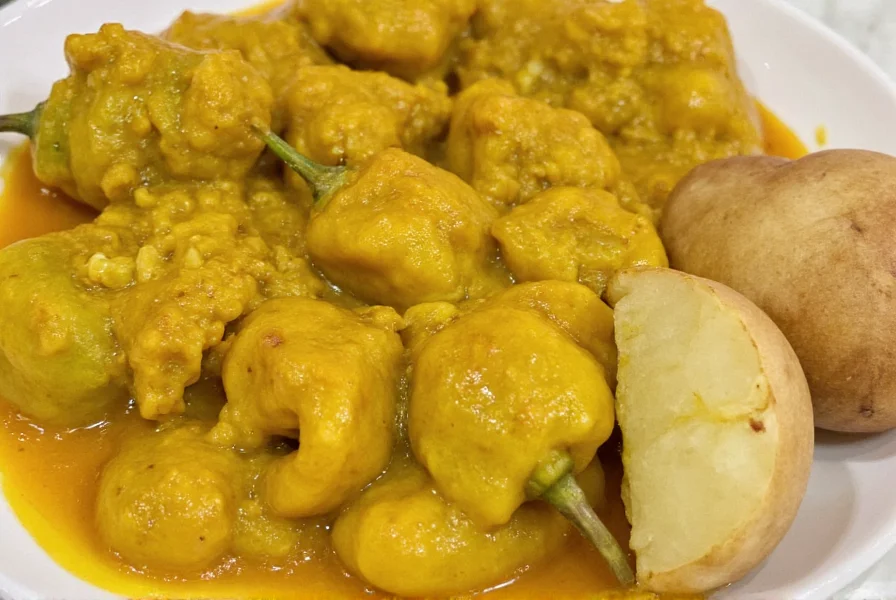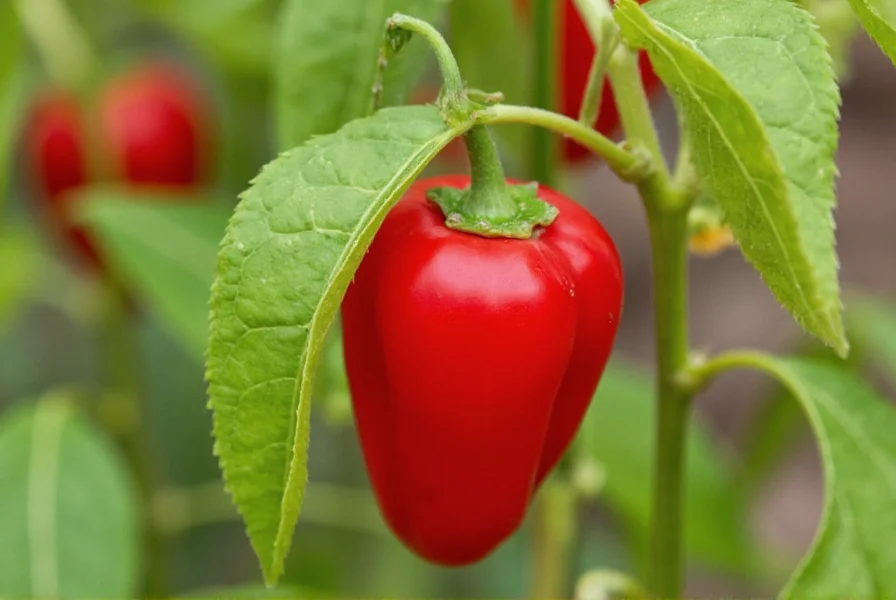Mirasol peppers represent one of South America's most distinctive culinary treasures, offering a unique flavor profile that distinguishes them from more common chili varieties. These bright yellow-orange peppers grow pointing skyward on the plant, which explains their Spanish name meaning "sunflower" or "looking at the sun." Unlike many downward-hanging chili varieties, this upward growth habit makes mirasol peppers easily identifiable in both gardens and markets.
Understanding the specific characteristics of mirasol peppers helps home cooks and culinary professionals incorporate them effectively into dishes. Their moderate heat level—ranging between 30,000-50,000 Scoville Heat Units—places them in the same general heat category as cayenne peppers but with a more complex flavor dimension. This heat level makes mirasol peppers accessible to those who enjoy some spice without overwhelming heat, while still providing enough kick to enhance various dishes.
Physical Characteristics and Flavor Profile
Mirasol peppers typically measure 2-3 inches in length with a tapered shape that narrows toward the stem. When fully ripe, they display a brilliant yellow to orange coloration that adds visual appeal to dishes. The thin skin and relatively small size make them versatile for various culinary applications.
The flavor profile of mirasol peppers sets them apart from other chili varieties. They offer a distinctive combination of:
- Fruity citrus notes (reminiscent of lemon and tropical fruits)
- Subtle floral undertones
- Moderate heat that builds gradually
- Earthy, slightly sweet finish
This complex flavor makes mirasol peppers particularly valuable in creating nuanced spicy dishes where heat alone isn't the primary goal. When comparing mirasol pepper heat level to other common varieties, they're significantly hotter than jalapeños (2,500-8,000 SHU) but milder than habaneros (100,000-350,000 SHU).

Origin and Cultivation
Mirasol peppers belong to the Capsicum baccatum species, which originated in the Andean region of South America. They've been cultivated for centuries in Peru, Bolivia, and Ecuador, where they remain integral to traditional cuisine. The climate and soil conditions of the Andean highlands contribute to the distinctive flavor characteristics of these peppers.
Gardeners interested in growing mirasol peppers should note they require:
- Warm temperatures (70-85°F / 21-29°C)
- Well-draining soil with moderate fertility
- Approximately 90-100 days to reach maturity
- Full sun exposure for optimal growth
Unlike some other chili varieties, mirasol peppers thrive in slightly cooler mountain climates, making them suitable for cultivation in regions with moderate temperatures. Their upward-growing habit helps protect the ripening peppers from soil-borne diseases and excessive moisture.
Culinary Applications
Mirasol peppers shine in traditional South American dishes, particularly in Peruvian cuisine where they're used in:
- Sauces like ají (a staple condiment in Peruvian households)
- Stews such as cau cau (tripe stew) and seco de carne
- Marinades for grilled meats and seafood
- Fresh salsas and relishes
| Pepper Variety | Scoville Heat Units | Flavor Characteristics | Best Culinary Uses |
|---|---|---|---|
| Mirasol | 30,000-50,000 | Fruity, citrusy, floral | Sauces, stews, marinades |
| Habanero | 100,000-350,000 | Tropical fruit, floral | Hot sauces, Caribbean dishes |
| Serrano | 10,000-23,000 | Grassy, bright | Salsas, guacamole |
| Jalapeño | 2,500-8,000 | Grassy, bright | Stuffed peppers, nachos |
When working with mirasol peppers in cooking, consider these tips for best results:
- Remove seeds and membranes to reduce heat while preserving flavor
- Add toward the end of cooking to preserve their delicate citrus notes
- Pair with complementary ingredients like lime, cilantro, and tropical fruits
- Use fresh for sauces or dry for longer-term storage and different flavor applications
For those wondering how to use mirasol peppers in cooking, they work exceptionally well in creamy sauces where their heat can distribute evenly. A traditional Peruvian ají verde can be adapted using mirasol peppers for a unique flavor variation. When substituting mirasol peppers in recipes, serranos or fresnos can work in a pinch, though they lack the distinctive floral notes.
Nutritional Benefits
Beyond their culinary value, mirasol peppers offer several nutritional benefits. Like other chili peppers, they contain capsaicin (responsible for heat) which has been studied for potential health benefits including metabolism support and pain relief. They're also rich in:
- Vitamin C (one pepper provides over 100% of daily requirement)
- Vitamin A (from beta-carotene in the orange pigments)
- Vitamin B6
- Dietary fiber
- Antioxidants
Finding and Storing Mirasol Peppers
Locating fresh mirasol peppers can be challenging outside their native regions. Those searching for where to buy fresh mirasol peppers have several options:
- Latin American or Peruvian specialty markets
- Farmers' markets in regions with diverse agricultural production
- Online specialty food retailers (often sold dried or frozen)
- Growing your own from seeds available through specialty gardening catalogs
When selecting mirasol peppers, look for firm, brightly colored specimens without soft spots or wrinkles. Store fresh peppers in the refrigerator's crisper drawer for up to two weeks. For longer storage, consider freezing (after roasting or raw) or drying the peppers. Dried mirasol peppers can be reconstituted for sauces or ground into powder for seasoning.
Common Substitutes and Comparisons
When mirasol peppers aren't available, understanding mirasol pepper substitutes becomes essential. The closest alternatives include:
- Fresno peppers (similar heat level but less floral)
- Orange habaneros (similar color but significantly hotter)
- Serrano peppers (milder heat but similar texture)
- Yellow wax peppers (milder heat, different flavor profile)
For those conducting mirasol pepper heat level comparison with other varieties, it's important to note that while the heat range overlaps with some peppers, the flavor profile remains distinctive. This makes direct substitutions challenging when authenticity is important.

Conclusion
Mirasol peppers offer a distinctive combination of moderate heat and complex flavor that makes them valuable in both traditional and contemporary cuisine. Their citrusy, floral notes distinguish them from other chili varieties, creating unique culinary possibilities. Whether you're exploring authentic Peruvian recipes or experimenting with new flavor combinations, understanding how to select, prepare, and use mirasol peppers can elevate your cooking. As interest in global flavors continues to grow, these vibrant peppers represent an accessible entry point to South American culinary traditions that balances heat with sophisticated flavor.
Frequently Asked Questions
What is the difference between mirasol peppers and aji amarillo?
Mirasol peppers and aji amarillo are actually the same pepper at different stages of ripeness. Mirasol refers to the yellow-orange ripe stage, while aji amarillo specifically denotes the fully mature, deep orange-yellow stage. Both terms describe peppers from the Capsicum baccatum species, with identical heat levels and flavor profiles.
Can I grow mirasol peppers in a container?
Yes, mirasol peppers grow well in containers with proper care. Use a 5-gallon pot with drainage holes, quality potting mix, and place in full sun. Container-grown mirasol peppers require consistent watering and regular feeding with balanced fertilizer. The upward-growing habit makes them particularly suitable for container gardening as the peppers won't touch the soil.
How do I reduce the heat of mirasol peppers in cooking?
To reduce mirasol pepper heat while preserving flavor, remove the seeds and white membranes (placenta) where capsaicin concentrates. Cooking the peppers in dairy products like cream or yogurt can also temper the heat. Adding acid (like lime juice) or sugar balances perceived heat. For significant heat reduction, blanch fresh peppers in boiling water for 1-2 minutes before use.
Are mirasol peppers the same as rocoto peppers?
No, mirasol peppers and rocoto peppers are different varieties. Mirasol peppers belong to the Capsicum baccatum species, while rocotos are Capsicum pubescens. Rocotos are significantly hotter (50,000-250,000 SHU), have black seeds, and a distinctive apple-like shape. Mirasol peppers are smaller, grow upward, and have the characteristic citrus-floral flavor of baccatum varieties.
How long do fresh mirasol peppers last in the refrigerator?
Fresh mirasol peppers stored properly in the refrigerator's crisper drawer will last 10-14 days. For optimal storage, keep them in a paper bag or perforated plastic bag to maintain humidity without trapping excess moisture. Avoid washing until ready to use. For longer preservation, consider freezing (after roasting or raw) or drying the peppers, which extends their shelf life to 6-12 months.











 浙公网安备
33010002000092号
浙公网安备
33010002000092号 浙B2-20120091-4
浙B2-20120091-4